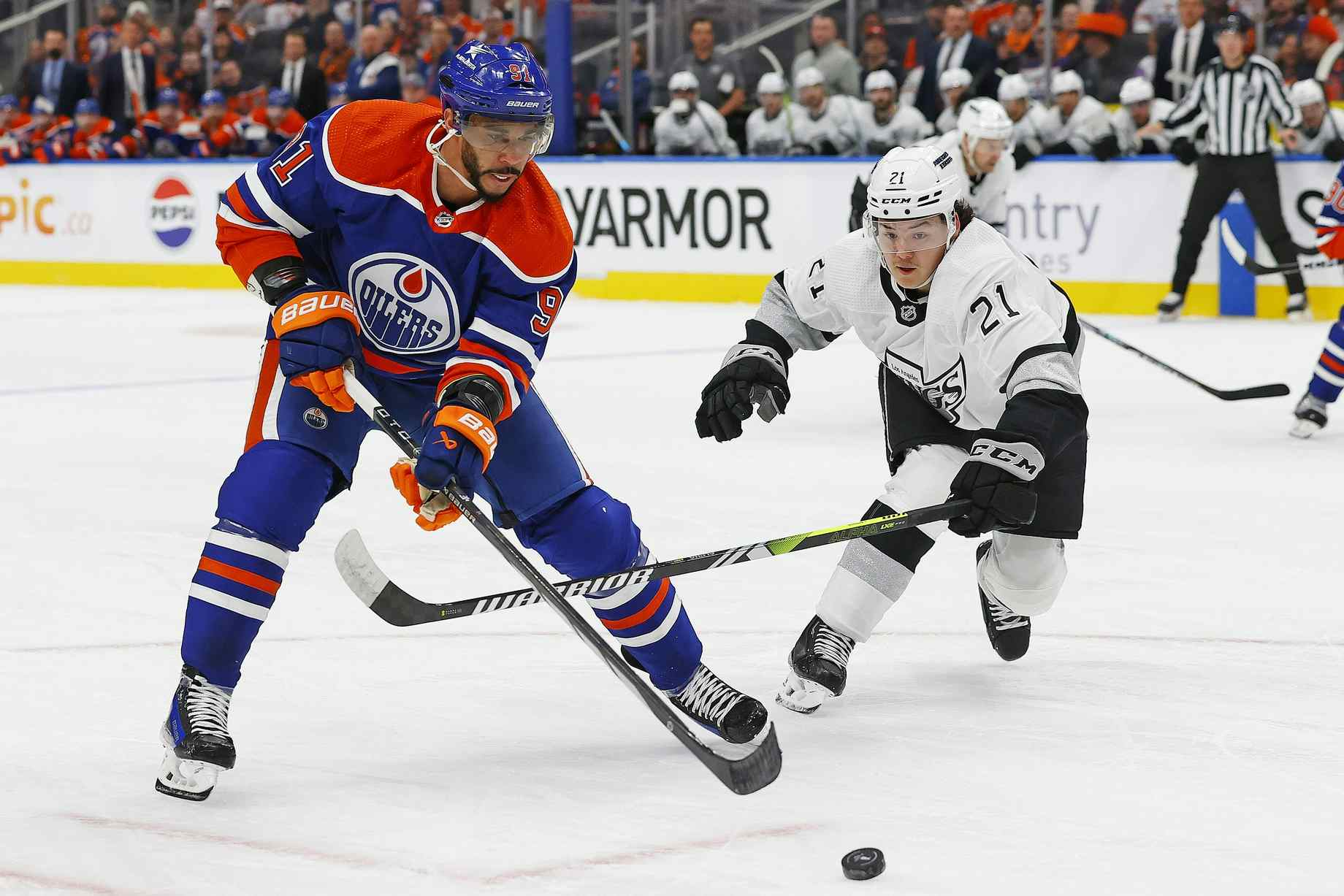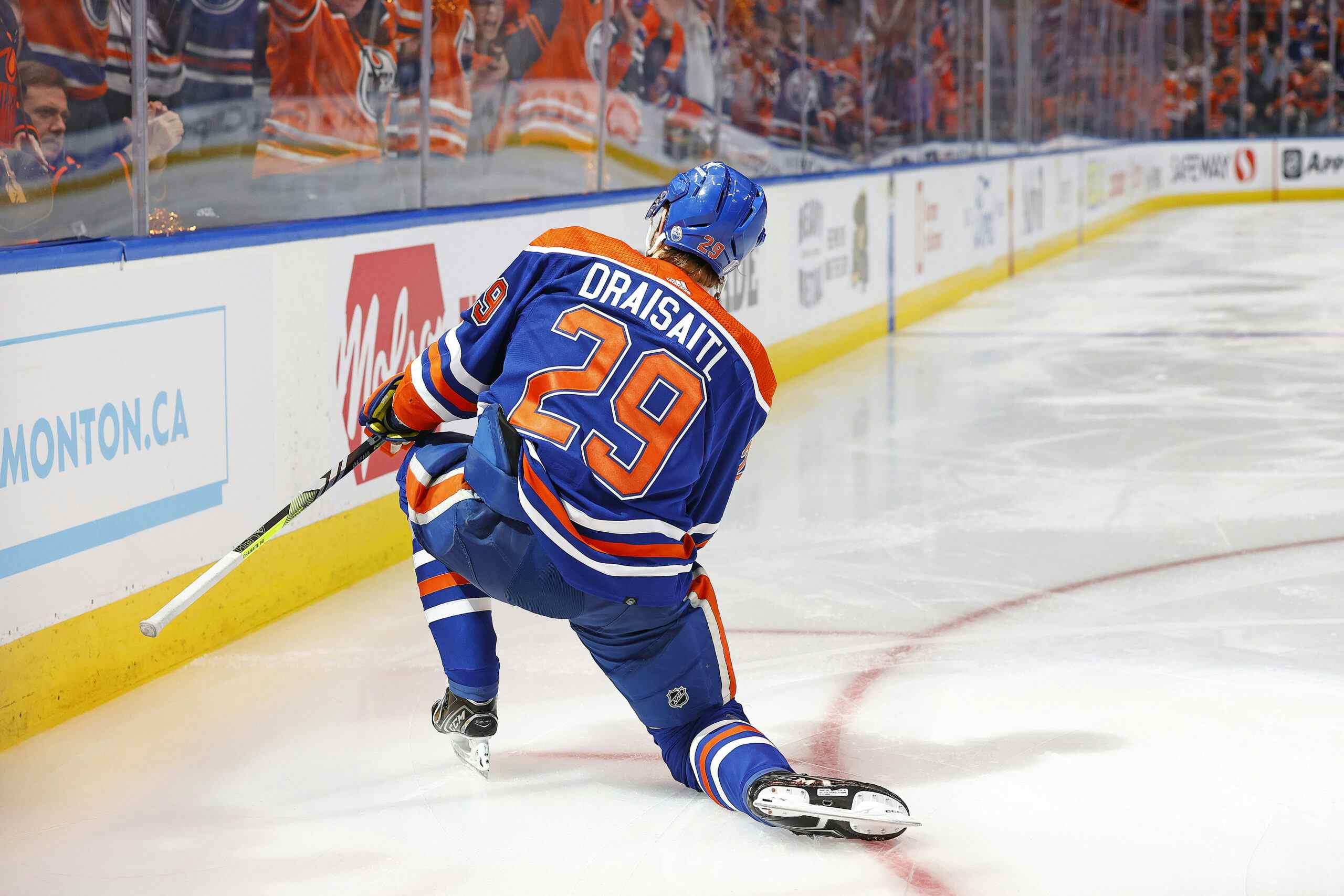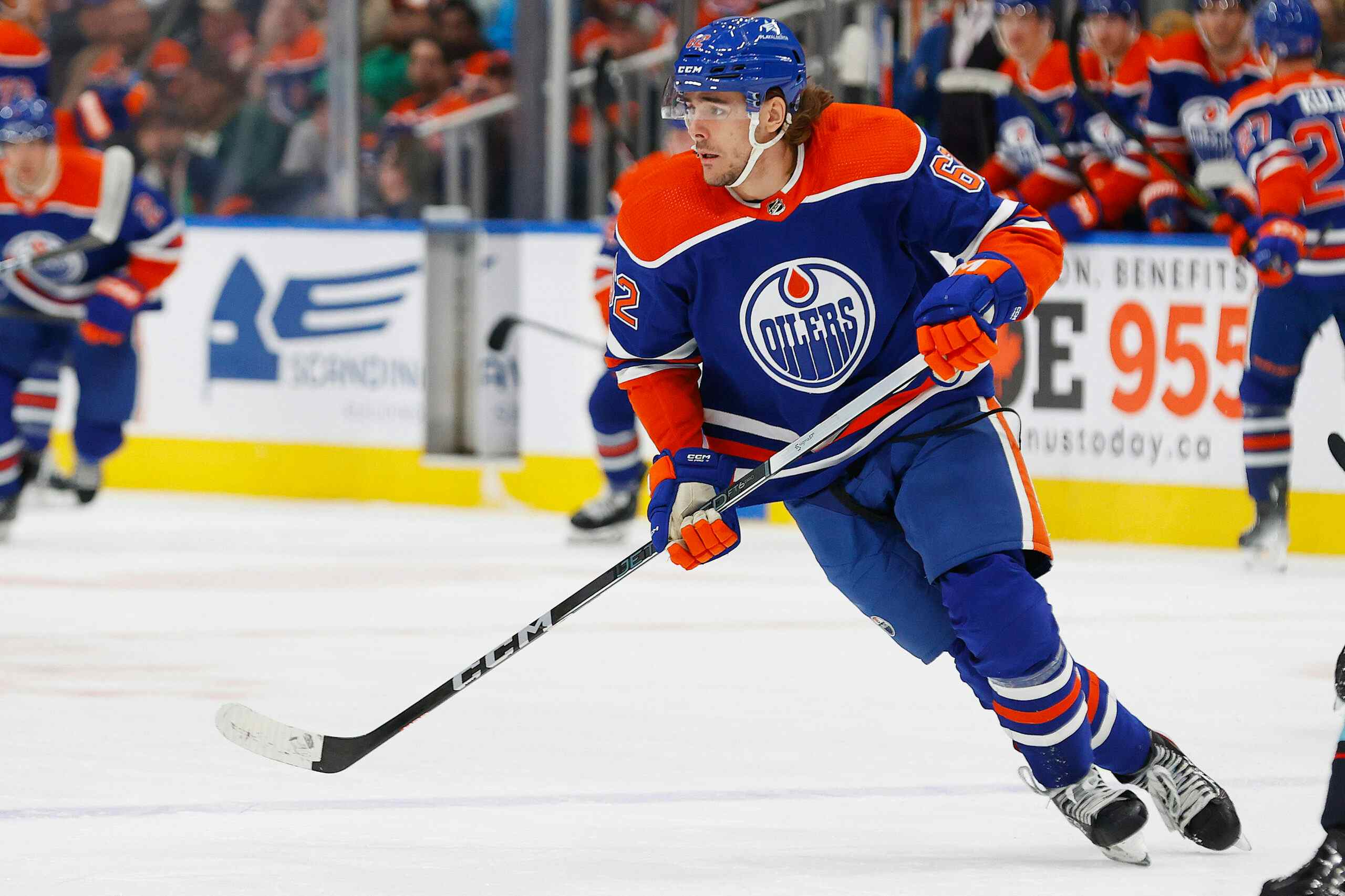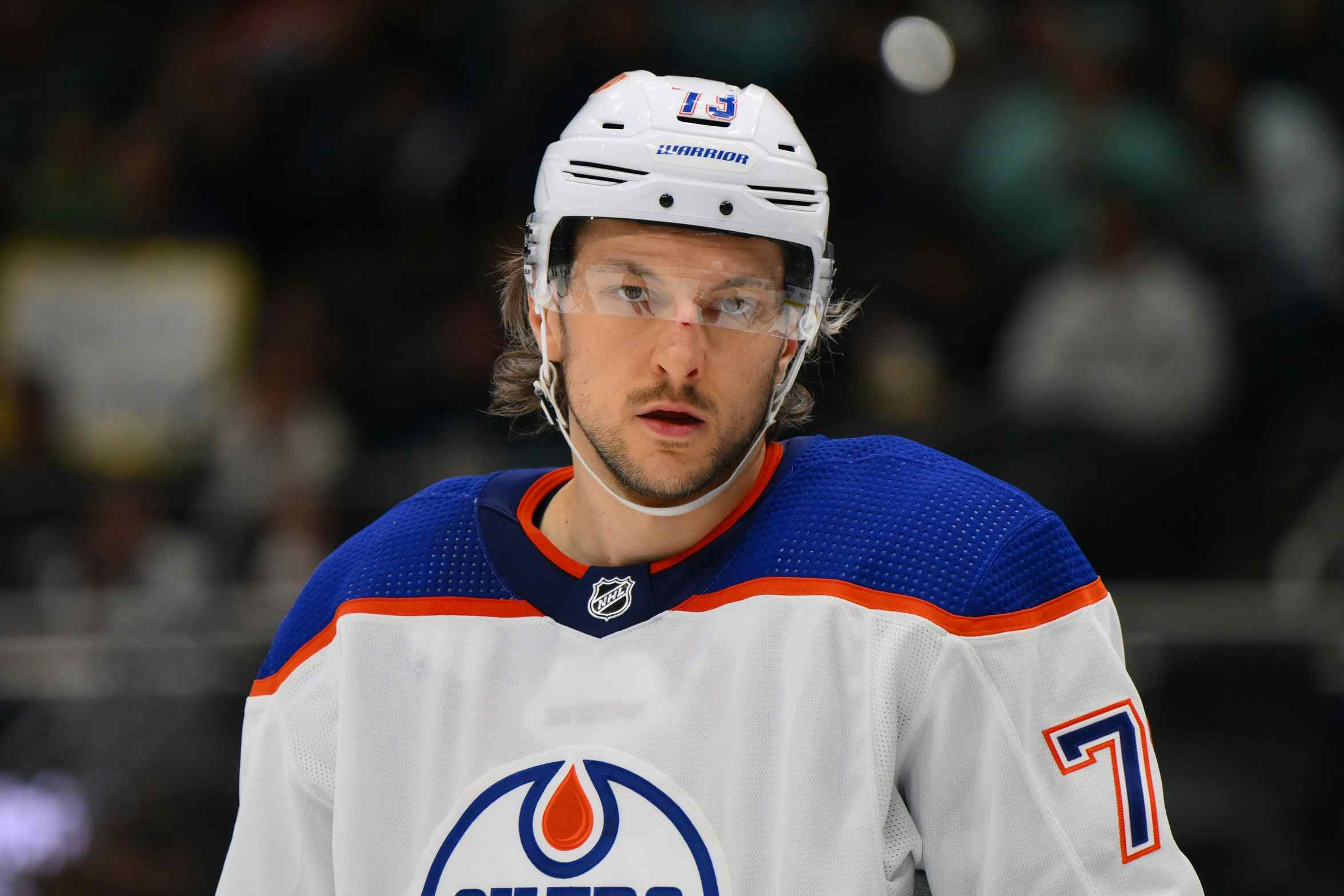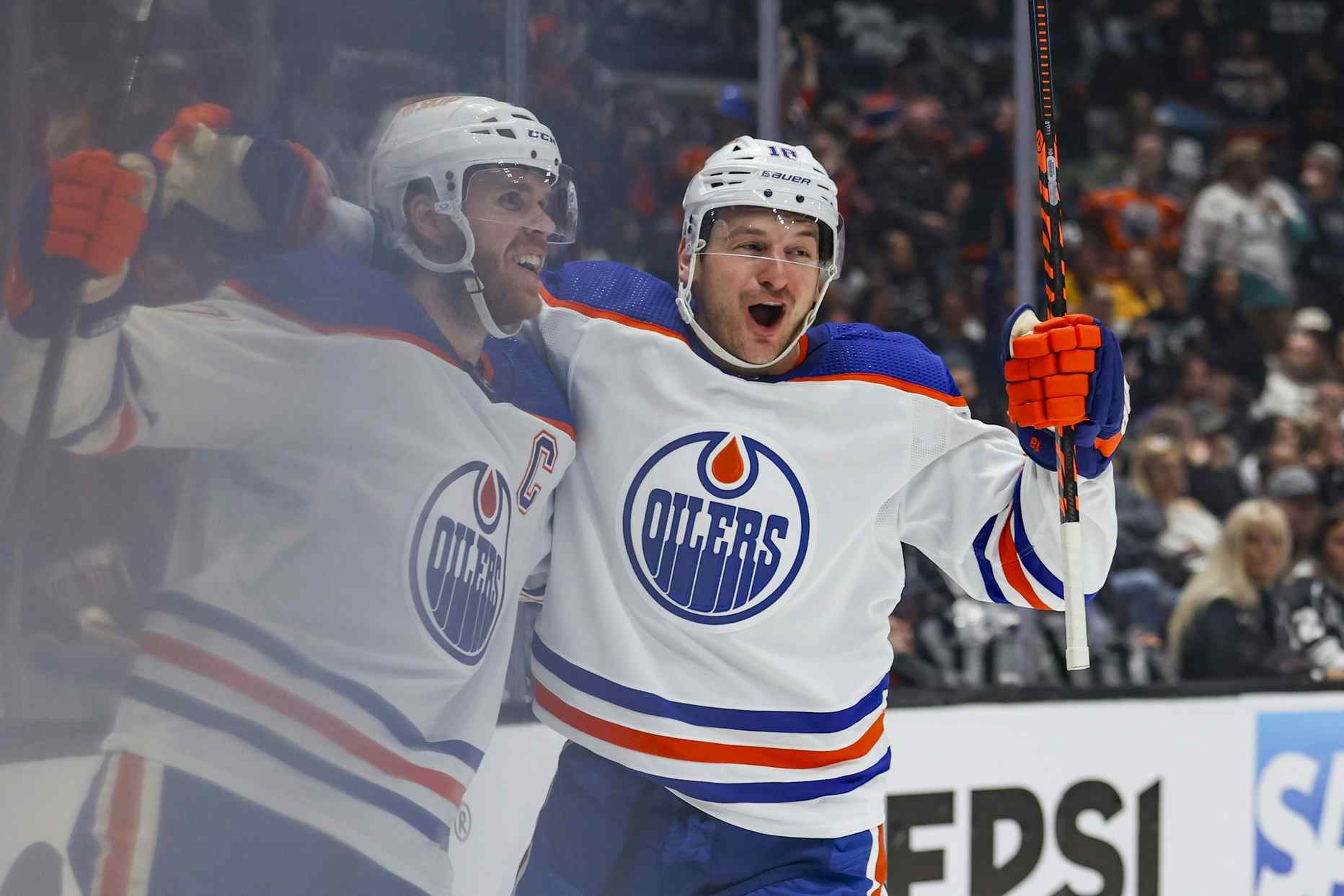Thomas Drance’s NHL Awards Ballot
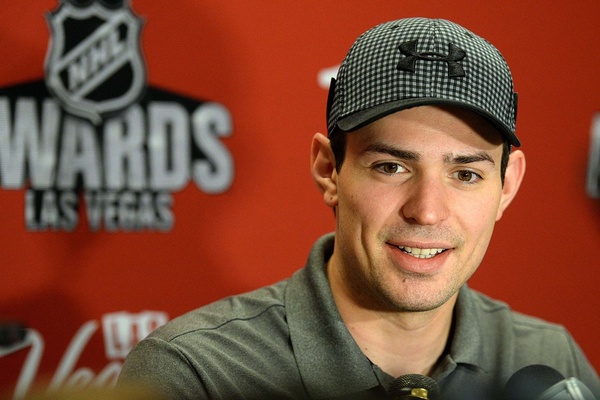
Photo Credit: Jake Roth/USA TODAY Sports
This was my first hockey season as a member of the PHWA, and I had the mixed blessing of casting an NHL Awards ballot. It was an honour, but it was also a heavy burden.
After years of slamming NHL awards voters for this, that and the other thing, actually having a ballot this season changed my perspective. I agonized for weeks over my selections, researched deserving candidates for each award heavily, re-streamed game video, and talked to a variety of industry people whom I trust before allowing my vote to be tallied.
Some of these decisions were decided by a wafer thin margin. I’d wake up one day thinking that Erik Karlsson was my pick for the Norris, and I’d go to sleep that night thinking that ‘really, P.K. Subban was the most valuable two-way defender in hockey this season.’ Then I cast my first place Norris vote for neither player.
Anyway, in the interest of transparency and because these sorts of hockey conversations are pertinent and fun, I’d like to present my 2014-15 NHL Awards ballot for your scrutiny, consideration and entertainment.
Hart Trophy
“To the player adjudged to be the most valuable to his team”
- Carey Price
- John Tavares
- Alex Ovechkin
- Erik Karlsson
- Devan Dubnyk
I assume that I’m strongly in the majority in casting my first-place Hart Trophy vote for a goaltender, and in particular, Montreal Canadiens goaltender Carey Price.
Price led all workhorse starters (at least 60 games played) in save percentage, posting a .933 that was first among such goaltenders by a vast margin (Cory Schneider was second at .925). At even-strength Price stopped .943 percent of all shots faced, an outrageous save rate. Only Devan Dubnyk was in the same stratosphere, and he wasn’t really that close.
While wins are a ‘team stat’ and shouldn’t be used for evaluating goaltenders, that’s a general rule that we might ignore in Price’s case. After all, Price was les Habitants.
The Canadiens were the 19th best shot suppression team in hockey at 5-on-5, and allowed shot attempts against at the sixth highest rate of any team in the league. Behind that permissive team, Price stopped over 94 percent of shots faced. Replace Price with a mortal human in goal, and the Canadiens might not sniff the playoffs, much less the division crown.
In second place was New York Islanders captain John Tavares, who paced the league in the scoring race for much of the season and was an elite point producer even as the Islanders were beset by a multitude of injuries. Even as his linemate Kyle Okposo and a good chunk of New York’s defense were lost to injury, Tavares kept producing at an elite rate.
While scoring better than a point per game, Tavares also led all Islanders forwards in ice time, and appeared in all 82 games. Among New York’s ten most frequently used players by ice-time per game, Tavares was the only Islander who dressed in all 82 games.
When you combine Tavares’ raw production with his durability and his overall value to the club, he edged out Ovechkin – the single best goal scorer and the most intimidating physical player in the game – who was my second place vote.
Erik Karlsson is the league’s single most dynamic offensive force. There are many great offensive defenseman in the NHL, but there’s only one point guard. Based Karlsson outscored all other NHL defenseman by six points, was third among NHL defenders in goal scoring rate and third in shot rate. He finished just outside the top-10 in points per 60, an accomplishment made even more impressive by the fact that only Drew Doughty logged more 5-on-5 minutes this season. As a team the Senators were outshot by 169 when Karlsson wasn’t on the ice, and outshot opponents by 17 when Karlsson was doing his one-man breakout machine routine. Very few NHL players meant more to the dynamism of their own teams than Karlsson did last season (only three players, in my view).
Finally, Devan Dubnyk singlehandedly changed the trajectory of the Minnesota Wild’s campaign. It’s rare that a potential MVP candidate changes teams in mid-season, but the fact that Dubnyk did, strengthened his case in some ways.
It allows us, for example, to look specifically at how Dubnyk impacted the Wild’s on-ice goal differential after he was acquired. This is what you call a dramatic turnaround:

Graph generated using war-on-ice.com
Norris Trophy

Photo Credit: Anne-Marie Sorvin/USA TODAY Sports
“To the defense player who demonstrates throughout the season the greatest all-round ability in the position”
- Drew Doughty
- Erik Karlsson
- P.K. Subban
- Mark Giordano
- Brian Campbell
This was a three-horse race for me, and the toughest vote I cast (by a lot).

Photo Credit: Candice Ward/USA TODAY Sports
I’ll start at the bottom of my ballot here. Though Aaron Ekblad made headlines for his stellar rookie campaign (and dservedly so), Brian Campbell remains the Florida Panthers’ best defender. He’s quietly one of the most impactful individual blue liners in the game.
The veteran puck mover averaged 90 seconds more per game than Ekblad did, and the underlying numbers would suggest that he was among the best individual players at dictating the flow of play in the entire league (which matches the eye test). Campbell narrowly edged out Roman Josi and Anton Stralman – both of whom I gave serious consideration – for fifth place on my ballot, largely because I just couldn’t ignore that he led all NHL defenseman in team-relative unblocked shot attempt percentage (and not by a slim margin).
Mark Giordano didn’t fare so well by that metric, but he was the second most impactful player by team-relative shot-attempt percentage and that fact, combined with Giordano’s two-way utility and offensive production, would’ve made him my top vote for the Norris if he’d remained healthy for even 75 games. I weighted durability and minutes logged heavily throughout this process though, and so Giordano finished fourth on my ballot.
The team-relative shot attempt metrics were similarly flattering for P.K. Subban, who put together a remarkable campaign and received strong consideration from this voter for first place on my ballot.
The Canadiens blue liner was fourth among NHL defensemen in total ice time logged, second in Team-Relative Corsi For percentage, and tied with Brent Burns for the second most points among all NHL defenders. Though Subban still occasionally flashes a propensity to keep opponents in the game, his overall two-way value is mammoth.
Ultimately it came down to Karlsson and Doughty for me though, because they were 1A defensemen in a way that Subban wasn’t quite. Subban was sixth among NHL defenders in ice-time, but only logged 90 seconds more than Andrei Markov per game and the Canadiens had a second pair that Michel Therrien leaned on with regularity. Doughty and Karlsson logged over five minutes more than the next most used defenseman on their respective teams, and any second pair defenders who appeared to have logged over 20 minutes per game (Chris Philips in Ottawa or Robyn Regehr in Los Angeles), mostly achieved that milestone because Doughty and Karlsson would regularly double shift with those players.
And between Doughty and Kalsson, the latter of whom was on my Hart Trophy ballot, I opted for Doughty as my No. 1 Norris Trophy pick. I do so despite convincing evidence like this:
Why?
There are several reasons.
I’m not in the ‘Karlsson can’t defend’ camp. In fact I’d posit that this notion is a complete perversion of any mature understanding of ‘defensive value’ in hockey. That said, the Senators were a more permissive team with Karlsson on the ice – by team relative unblocked shot percentage – than they were without him. That was tough for me to overlook.
When I looked deeper into Doughty and Karlsson’s WOWY splits, it was tough for me to ignore that the Senators were outscored when Karlsson was on the ice in over 900 minutes 5-on-5 minutes in which Karlsson wasn’t matched up with Methot. Ottawa also permitted roughly six additional shot attempts per 60 minutes when Karlsson was on the ice at 5-on-5 without Methot.
Doughty meanwhile logged an insane amount of ice time this season for an undermanned team. Though he did better with Jake Muzzin than he did away from his most frequent partner, he logged a good deal of additional ice time with inferior players and the Kings came out at least even in those minutes (even when Robyn Regehr was anchored to his left side). Doughty also was a fixture on the penalty kill for the Kings, something that wasn’t true of Karlsson.
So Doughty was my vote. He was less dependent on the identity of his defensive partner and I believe he’s the most dynamic two-way defenseman in hockey. He’s a better defensive player than Karlsson, and the Kings leaned on him more heavily than the Canadiens leaned on Subban. For me, Doughty demonstrated the best all-around ability at the position during the 2014-15 campaign.
Calder Trophy

Photo Credit: Candice Ward/USA TODAY Sports
“To the player selected as the most proficient in his first year of competition”
- Johnny Gaudreau
- Filip Forsberg
- Aaron Ekblad
- John Klingberg
- Anders Lee
I’ll start with the obvious omission: Ottawa Senators rookie Mark Stone. Stone was ultimately a finalist for the Calder Trophy and finished the year tied with Johnny Gaudreau for the rookie scoring lead (and was first by virtue of his higher goal totals). This was another really tough decision for me and I agonized over whether or not I’d include him or Anders Lee in the fifth spot on my ballot. Ultimately I opted to go with Lee because he had such a massive impact on the possession numbers of his line-mates (Stone was also a good possession player though), and he benefitted somewhat less from the percentages.
Among NHL forwards who logged at least 750 minutes, Stone shot the fifth highest percentage. His on-ice shooting percentage at 5-on-5 was well north of 10. And he also received more power-play ice time.
I like Stone’s game a lot. I think the Senators have a forward who will play in their middle-six for the better part of the next decade. When I considered those factors though, and weighed them against Lee’s super elite shot rate and superior goal scoring rate, I ultimately felt that the edge Stone had in terms of offensive production was likely ephemeral – and likely the result of things outside of his direct control. So I decided to vote for Lee because I like his all-around game better.
A couple of defensemen in Dallas Stars blue-liner John Klingberg and Florida Panthers defender Ekblad finished at third and fourth on my ballot respectively. I don’t think Ekblad requires all that much in the way of an explanation, he had a historic season for an 18-year-old in the NHL.
Klingberg was stellar too though, managing bona fide second pairing defensive results and generating points at an elite rate on a Stars blue line that desperately needed what he brought to the table.
I’m not sure how Filip Forsberg wasn’t a finalist for the Calder Trophy. Forsberg’s defensive impact was stunning for a player his age (or any age, for that matter), and he was Nashville most efficient even-strength scorer. He’s going to be one of the league’s most dynamic two-way wingers for a long time to come.
Finally Johnny Hockey was my vote for the Calder Trophy.
Gaudreau led all rookies in power-play points, he tied for the scoring lead among rookie forwards, he led all rookie forwards in ice-time per game, and he was one of the NHL’s most threatening presences on the power-play.
If you’re wondering why I opted to hold Stone’s percentage-driven scoring totals against him, but disregarded similar factors in evaluating Gaudreau, it comes down to feel and the old eye test. I watched a lot of Senators and Flames games this season and it seemed to me that Stone was more purely fortunate, whereas Gaudreau has a chance to be a generational offensive talent, the sort of player that can legitimately drive percentages.
Lady Byng Trophy
“To the player adjudged to have exhibited the best type of sportsmanship and gentlemanly conduct combined with a high standard of playing ability”
- Sean Monahan
- Logan Couture
- Kevin Klein
- Matt Moulson
- Chris Tanev
Like everyone else, I based my Lady Byng vote mostly on penalty minutes, though I focused more on rate stats than cumulative totals. I also gave weight to players who play more difficult defensive positions and roles, figuring that it’s tougher to avoid taking penalties when you’re counted on to spend a lot of time playing without the puck.
That’s why Sean Monahan was my pick. The second-year centre took the second most defensive zone faceoffs at 5-on-5 of anyone in hockey (behind only Patrice Bergeron) and barely took any penalties, finishing the season with just 12 total PIM in nearly 1600 minutes logged.
Logan Couture averaged 19 minutes a game and nearly 1600 total minutes, he was a full-time pivot, and he took a grand total of 12 PIM. Monahan got the edge over Couture because of his heavy defensive zone burden, mostly.
Kevin Klein and Chris Tanev both did a pretty marvellous job of playing hard-nosed defense while taking very few penalties and avoiding any injurious mis-timed hits.
Matt Moulson rounds out the list, as the only winger I included. He was rarely penalized and kept his cool despite playing for a historically bad team (which has to be factored into a “sportsmanship and gentlemanly conduct” award in my view, a lesser human would’ve been dropped f-bombs in the press all year long).
Selke Trophy

Photo Credit: James Guillory/USA TODAY Sports
“To the forward who best excels in the defensive aspects of the game”
- Patrice Bergeron
- Mikko Koivu
- Anze Kopitar
- Dominic Moore
- Jonathan Toews
Patrice Bergeron is the best defensive forward in the game. Though he led all NHL centremen in shifts started 200-feet from the oppositions net he still managed the fourth best Corsi For percentage (58 percent) among all big-minutes NHL forwards. An ace in the circle, Bergeron won nearly 61 percent of his defensive zone faceoffs, and the opposition managed just 58 shots in total following Bergeron’s over 530 own-zone draws.
Perpetually under-rated two-way pivot Mikko Koivu was my second place vote. Koivu was one of the league’s best shot suppressing centremen and started well north of 350 shifts in the defensive zone, far and away the most of any Wild pivot. The Wild were exceptionally dangerous on the counter attack following defensive zone draws that Koivu took, scoring two goals within 10 seconds of his defensive zone draws (and permitting only three).
Anze Kopitar led the entire NHL in Corsi For percentage and was the single best shot suppressing centreman in hockey. I ultimately elected to vote for Koivu ahead of Kopitar because Koivu was narrowly better – from a team-relative perspective – at limiting shot attempts against and unblocked shot attempts against than Kopitar was at 5-on-5. Once I factored that in with my belief that Kopitar had more help in terms of his team’s overall quality, Koivu edged him out. Only by a nose though.
Dominic Moore started an outrageous proportion of his shifts in the defensive zone, and was a ridiculously effective specialist for a Rangers team that had their centre depth gutted by the loss of Brad Richards and Brian Boyle during the summer of 2014. That issue was further compounded by an early-season injury to Derek Stepan. Moore’s stepping up and turning in a Selke caliber season – in my view anyway – was crucial for the Presidents’ Trophy winners. Moore was also the most impactful penalty killing forward in hockey (based on team-relative Corsi For percentage at 4-on-5) and was among the league’s best at preventing shots against following his defensive zone faceoffs.
Finally Jonathan Toews is a monster two-way player and was an easy pick for the fifth spot on my ballot. The other contenders were Joe Thornton, Henrik Sedin and Monahan, and I think it’s plainly evident that Toews is the best defensive player among that group of forwards.
NHL All-Star Team
CENTER — John Tavares, Steven Stamkos, Sidney Crosby
RIGHT WING — Jakub Voracek, Vladimir Tarasenko, Jiri Hudler
LEFT WING — Alex Ovechkin, Max Pacioretty, Rick Nash
DEFENSE — P.K. Subban, Erik Karlsson, Drew Doughty, Mark Giordano, Brian Campbell, Roman Josi
GOALTENDER— Carey Price, Devan Dubnyk, Cory Schneider
For the NHL All-Star Team I basically just picked the players whom I believe to be the best at their positions, unless a certain player did something truly remarkable (like Roman Josi did, or Jiri Hudler did in leading all NHL players in even-strength production).
Cory Schneider is insanely good, and if the Devils can ever get him some scoring help, he’s going to lead them deep into the postseason.
NHL All-Rookie Team
FORWARD — Filip Forsberg, Johnny Gaudreau, Anders Lee
DEFENSE — Aaron Ekblad, John Klingberg
GOAL — Michael Hutchinson
This is pretty self-explanatory, as it’s basically my Calder Trophy ballot with Michael Hutchinson in goal.
Thanks for reading and make sure to let me know what I got wrong and what I got right in the comments.
Recent articles from Thomas Drance

